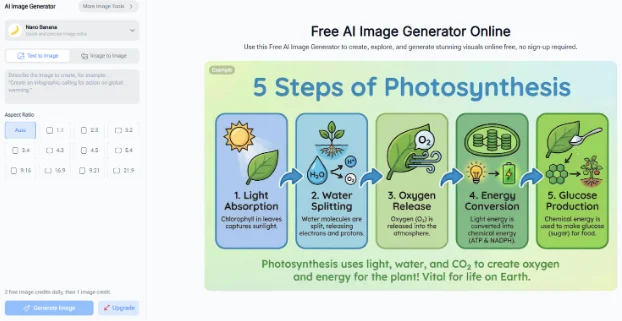In the ever-evolving landscape of software development, organizations are constantly seeking ways to improve collaboration, efficiency, and speed of delivery. This is where DevOps comes into play. DevOps, a fusion of development and operations, is a set of practices, cultural philosophies, and tools aimed at breaking down silos between development and operations teams to enable faster and more reliable software delivery.
In this blog, we will explore the concept of DevOps in detail, examining its principles, benefits, best practices and DevOps monitoring tools.
Understanding DevOps
DevOps is a collaborative approach that emphasizes close cooperation and communication between development, operations, and other cross-functional teams involved in the software delivery process. It aims to bridge the gap between software development and IT operations by promoting a culture of shared responsibility, continuous integration, continuous delivery (CI/CD), and automation. DevOps aims to align business objectives with IT initiatives, delivering value to end-users more efficiently.
Key Principles of DevOps
- a) Collaboration and Communication: DevOps emphasizes strong collaboration and effective communication among teams to foster a culture of shared goals, knowledge sharing, and mutual respect. This facilitates better coordination and problem-solving throughout the software development lifecycle.
- b) Continuous Integration and Delivery: CI/CD is a fundamental aspect of DevOps, enabling frequent and automated integration of code changes into a shared repository, followed by automated testing, deployment, and delivery to production environments. This ensures faster feedback loops and reduces the time to market.
- c) Infrastructure as Code (IaC): DevOps promotes the use of IaC, where infrastructure provisioning, configuration, and management are treated as code. This allows for versioning, automation, and consistency in infrastructure deployments, reducing manual errors and ensuring reproducibility.
- d) Automation: Automation is at the heart of DevOps. By automating repetitive and manual tasks, such as testing, deployment, and monitoring, teams can focus on more value-added activities. Automation improves efficiency, reduces human errors, and enhances the reliability of software delivery.
Benefits of DevOps
- a) Faster Time to Market: By fostering collaboration and streamlining processes, DevOps enables organizations to release software faster, responding to market demands and customer feedback more effectively.
- b) Improved Quality and Reliability: DevOps practices, including continuous testing and monitoring, enable early detection of issues, faster bug resolution, and more stable software releases. This leads to improved quality and reliability, enhancing customer satisfaction.
- c) Increased Efficiency: Automation of manual tasks and the elimination of silos lead to increased efficiency and productivity. DevOps enables teams to focus on innovation and higher-value work rather than repetitive and mundane activities.
- d) Enhanced Collaboration and Communication: DevOps promotes a culture of collaboration and open communication, breaking down barriers between teams. This leads to improved knowledge sharing, better problem-solving, and stronger team cohesion.
- e) Scalability and Flexibility: DevOps practices enable organizations to scale their infrastructure and applications more efficiently. Automation and IaC allow for easier provisioning and management of resources, adapting to changing business needs.
Best Practices for DevOps Implementation
- a) Cultural Transformation: DevOps is not just about tools and processes; it requires a cultural shift within the organization. Encourage collaboration, shared ownership, and continuous learning to foster a DevOps mindset.
- b) Continuous Integration and Delivery: Implement CI/CD pipelines to automate code integration, testing, and delivery. This ensures faster feedback loops, reduces errors, and enables frequent releases.
- c) Infrastructure Automation: Embrace IaC tools and practices to automate infrastructure provisioning, configuration, and management. This allows for reproducibility, scalability, and faster deployments.
- d) Monitoring and Feedback: Implement robust monitoring and logging practices to gain real-time visibility into the performance of applications and infrastructure. Monitor key metrics, collect logs, and use analytics to identify bottlenecks, detect anomalies, and improve system reliability.
- e) Security and Compliance: Embed security and compliance practices into the DevOps process from the start. Implement security testing, vulnerability scanning, and automated compliance checks to ensure the integrity and protection of systems and data.
- f) Continuous Learning and Improvement: Foster a culture of continuous learning and improvement. Encourage experimentation, conduct post-mortems, and gather feedback to identify areas for enhancement and iterate on processes and tools.
- g) Cross-Functional Collaboration: Promote collaboration and cross-functional teams. Break down silos by encouraging developers, operations, QA, and other stakeholders to work together, share knowledge, and take ownership of the entire software lifecycle.
Top DevOps Monitoring Tools
To optimize the efficiency of the development process, organizations rely on DevOps monitoring tools that track the performance and well-being of applications, services, and infrastructure. To assist your business in this endeavor, here is a compilation of the essential DevOps monitoring tools you should consider:
-
nOps
nOps is a DevOps monitoring solution that caters to cloud-native environments. Its primary purpose is to assist teams in efficiently managing, monitoring, and operating their distributed systems. By offering comprehensive visibility into the health of services and applications across various environments, nOps empowers users to promptly identify and resolve issues. With real-time insights into application and service performance, nOps facilitates effective troubleshooting and optimization for enhanced system efficiency.
-
Datadog
As an advanced monitoring tool, Datadog equips organizations with the ability to collect and analyze their DevOps metrics effectively. This powerful solution provides real-time visibility into the performance of applications and infrastructure, enabling users to stay informed about their system’s health. With comprehensive reporting and analytics capabilities, Datadog empowers users to gain actionable insights and make informed decisions. By offering a unified view of the DevOps environment, it simplifies issue identification and resolution processes.
-
Splunk
Splunk is an analytics platform that supports the analysis and monitoring of DevOps environments. It empowers organizations to search, analyze, and visualize their DevOps data in a user-friendly manner. By leveraging Splunk’s capabilities, users can identify patterns, detect anomalies, and uncover valuable trends within their DevOps ecosystem. This enables proactive measures to be taken, optimizing the efficiency and reliability of the system.
These tools play a crucial role in identifying and resolving issues promptly.

The Connection Between Accounting Firms And Regulatory Compliance

Why Smart Startups Choose Custom AI Business Solutions Today

How to Optimize Business Operations with Vending Machines in Australia

The Digital Lifeline: How Technology is Revolutionizing Addiction Recovery

From Clicks to Clients: Why Trust-First Local SEO Wins the Long Game

Forgot Your iPhone Password? Here’s How to Unlock It Easily

How Strikes and Step Through Bikes Are Using Tech for Better Range

NoteGPT AI Image Generator: Transforming Branding and Marketing









